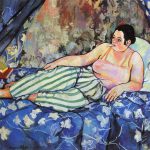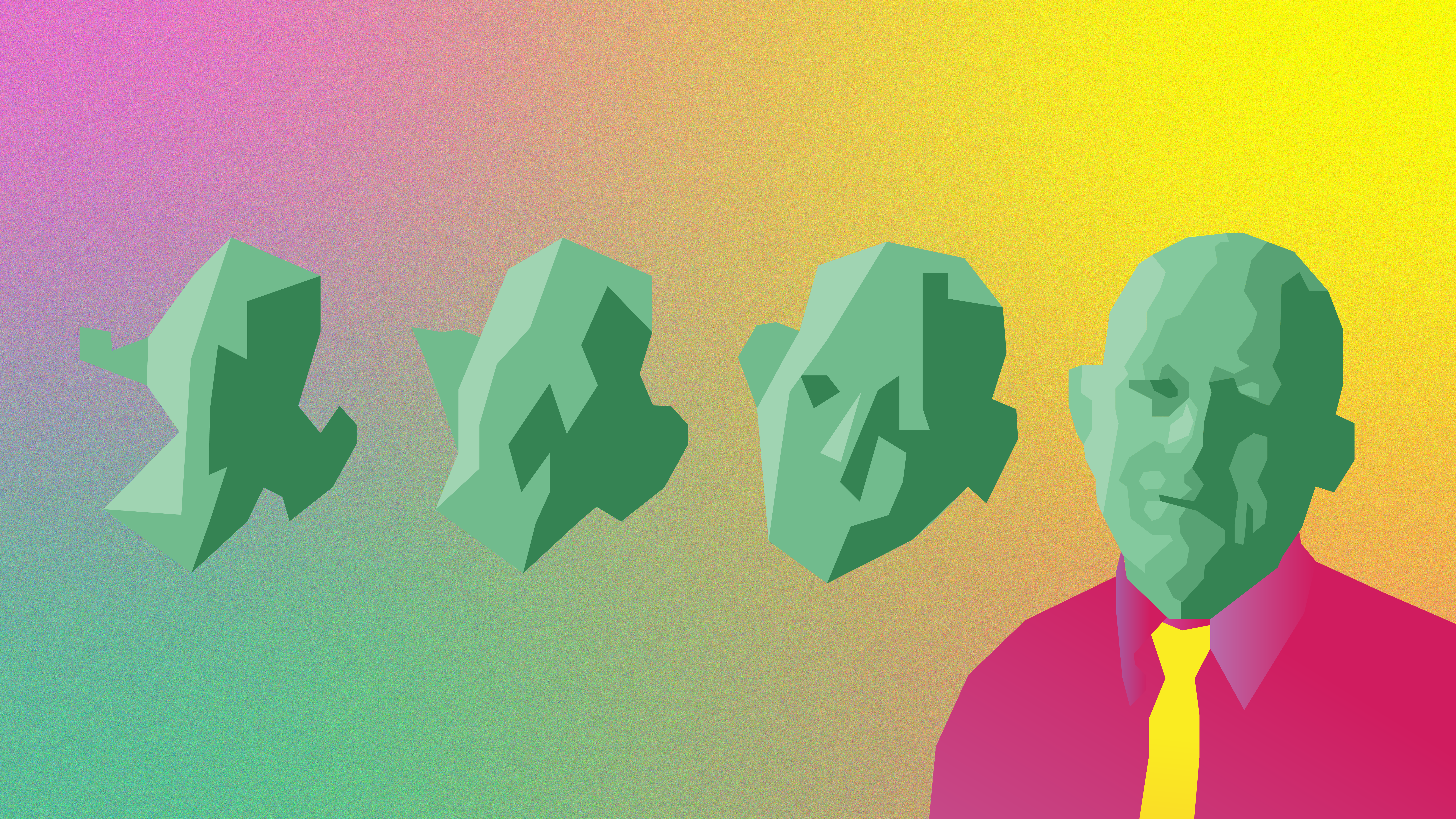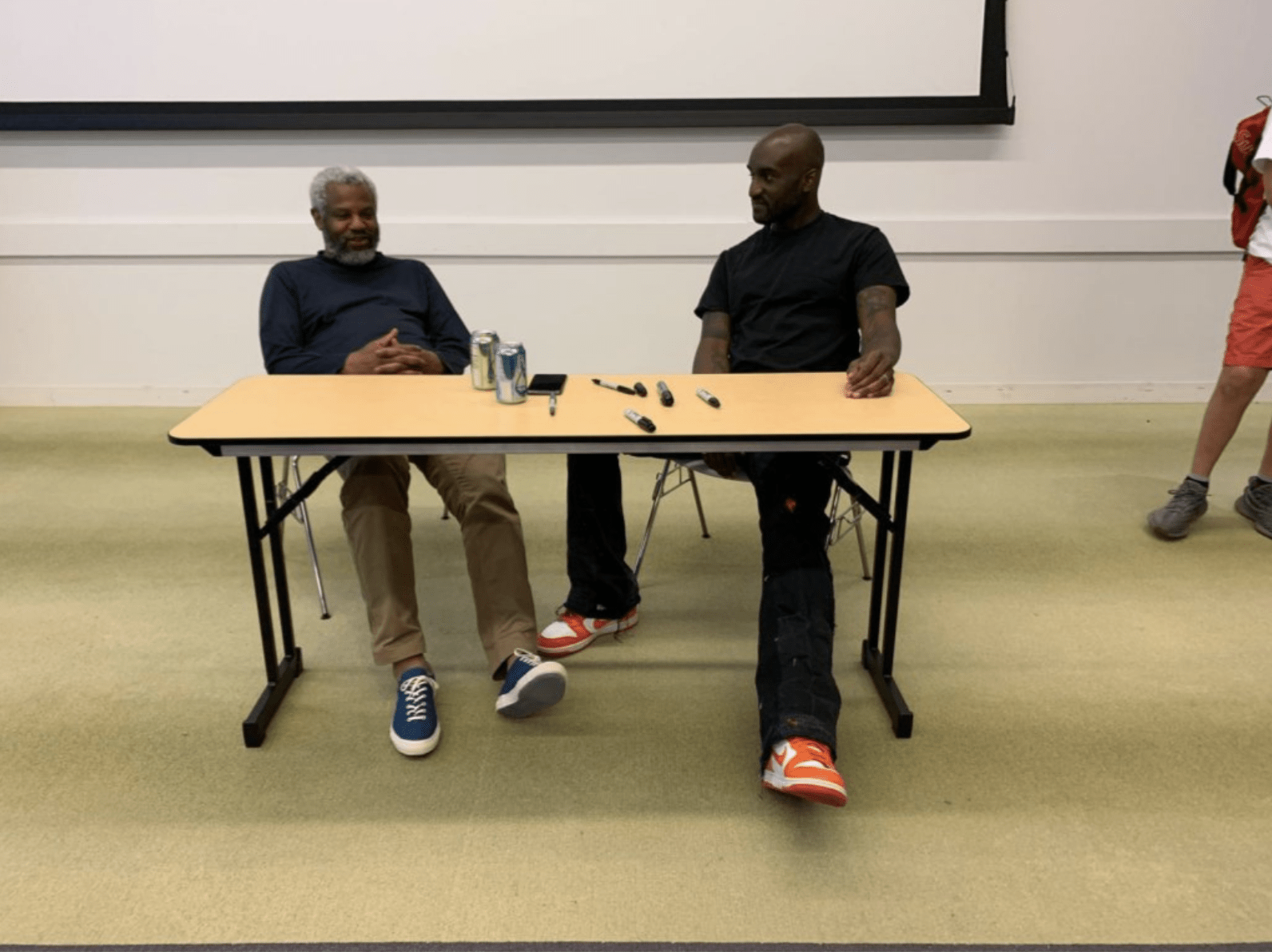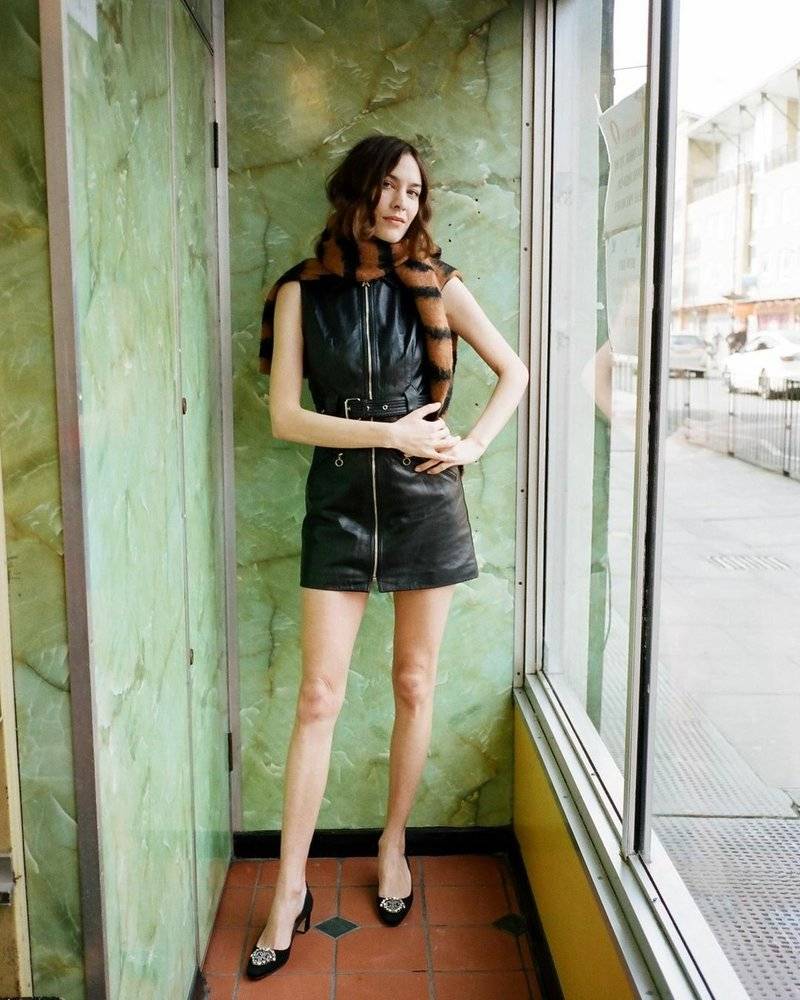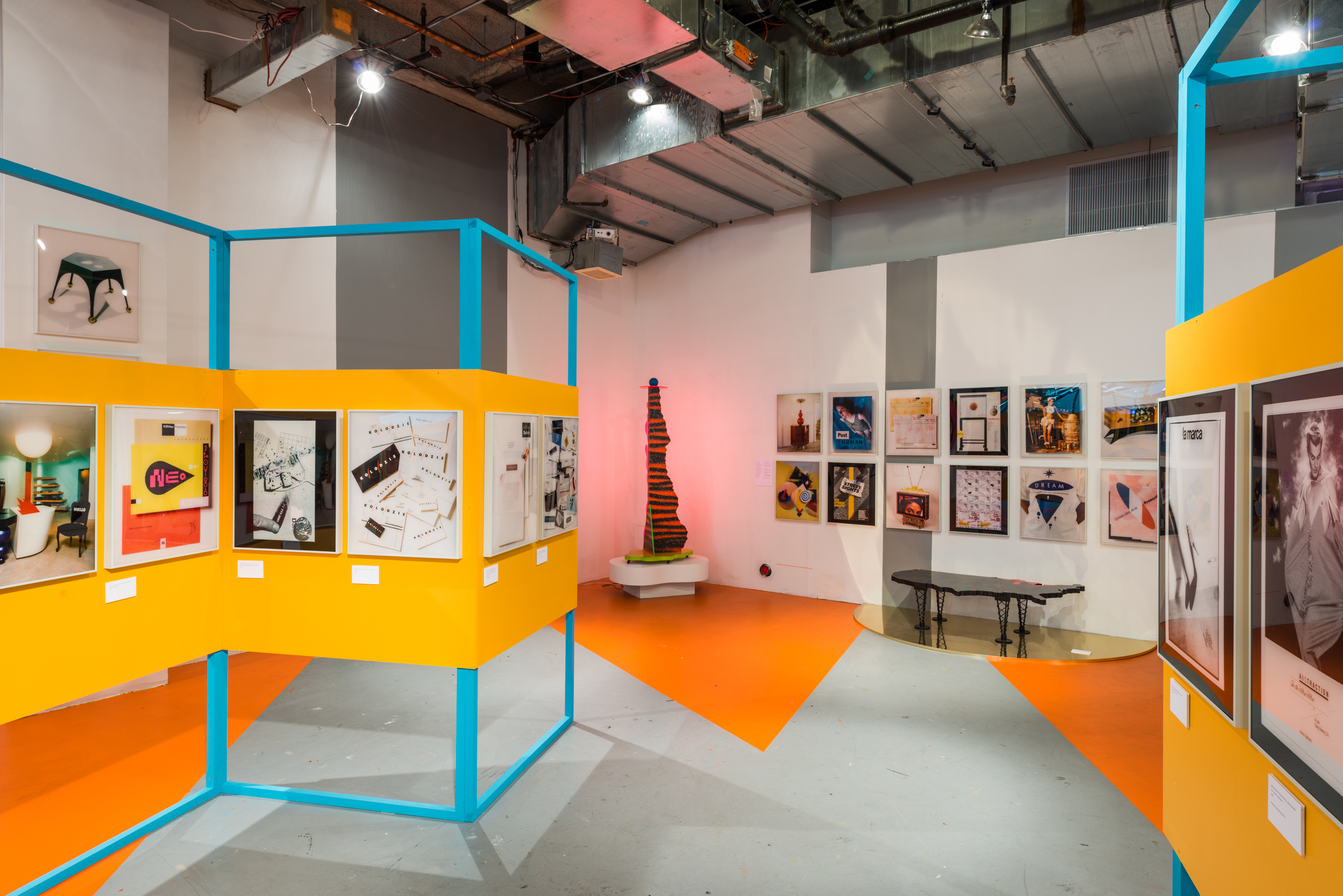
View of “Dan Friedman: Radical Modernist.” Image courtesy of the Chicago Design Museum.
Q: What’s red, yellow, and radical all over?
A: “Dan Friedman: Radical Modernist,” an exhibition currently on display at the Chicago Design Museum. Vibrant, experimental, and ever-relevant, Dan Friedman’s work acts as a clear marker of a seminal moment in art and design history. The show, curated by Friedman himself before his death in 1995, is an exhaustive compilation of case studies exemplifying the artist, designer, and educator’s aesthetic approach to his own revolution: radical modernism.
Friedman coined the term “radical modernism” based on its departure from — yet continued reference to — modernist design. Coming from a background and education in high modernism, he became dissatisfied with the blind adaptation of modernist aesthetics into the corporate culture of the ’70s and ’80s.
As a movement, radical modernism sought to bridge the gap between many pairs of diametrically opposed ideas: the stark morality of high modernism and the engrossing pessimism of then-emerging postmodernism, the natural and man-made worlds, and the expressive possibilities of art and the commercial realities of modern design. His 12-point radical agenda, released in 1994, outlined the role he hoped artists and designers would thoughtfully, yet “playfully” embrace moving forward.
Born in Ohio in 1945, Friedman studied at Carnegie Institute of Technology in Pittsburgh before heading to the Ulm School of Design in Germany. Hochschule für Gestaltung Ulm, as it was known in German, was founded in part by a former student at the Bauhaus. Unsurprisingly, the school adopted many Bauhaus principles, though it did diverge on the topic of technology and its place in relation to the process of creating. With a traditional education in formal design principles under his belt, Friedman returned to the states to continue his career working with a variety of corporations and organizations.
In line with Friedman’s desire for productive progressiveness, social awareness also went hand-in-hand with his practice.
As a teacher at Yale, and later the State University of New York at Purchase, Friedman encouraged young artists and designers to express themselves passionately through their work, take risks, and do good, all while standing on a solid base of design theory. His foundational exercises for students consisted of exploring the boundaries between legibility and decipherability, or the difference between gathering meaning from the text itself, and deciphering meaning from how the text is laid out on a page and its associated emotionalism. In Friedman’s mind, the proper balance of legibility (also referred to as functionalism) and unpredictability (disruptions of a system) was how the most successful design could be born.
Towards the end of his life, after a long battle with AIDS, Friedman wrote his long-form manifesto on radical modernism and curated this very show, making concrete his vision for the future of art and design.
In line with Friedman’s desire for productive progressiveness, social awareness also went hand-in-hand with his practice. He considered not only the context and effect of his work on a larger scale, but the work’s afterlife and the afterlife of cultural ephemera in general as well. Many of his sculptural pieces are constructed from found or reused materials in an effort to renew value and make a statement about our growing throw-away culture. These pieces end up taking on the playfulness of early Dada assemblages with the three dimensionality and monumentality of Louise Nevelson’s goliaths.
In today’s climate, where artists and designers feel ever more pressure to lend their eyes, ears, and hands to the political and social cause, Dan Friedman’s work continues to hit a relevant chord. Even aesthetically speaking, Friedman remains a beacon of inspiration for a new wave of new wave typographers emerging after the short resurgence of minimalism (modernism without the theory, as I like to refer to it) we saw in the mid-to-late-2000s.
The rest of Friedman’s work certainly runs the gamut: His furniture and designed spaces take inspiration from traditional designs found in South America, Africa, and Asia, while his graphic design calls to mind a creative lovechild between the free experimentation of Tristan Tzara and the controlled Swiss style of Armin Hoffman. Unabashed use of color, shape, pattern, form, and material run rampant. The show itself is a wonderful playground of color and form. The floor is painted grey with a bright orange starburst in the center of the space mimicking the loud shapes prevalent in much of Dan’s work.
In no particular order, visitors may wind and weave through a series of framework “screens” where prints of Dan’s work — anything from his work for Citibank to photographs of his “mental furniture” — are hung. Tucked along the wall and in the corners of the gallery are examples of his furniture and sculpture, inviting the visitor to explore every inch of the exhibition space.
The show is up until August 12, so if you’re in the mood to have your mind bent and filled with radical new ideas, there’s no time like the present.
“Dan Friedman: Radical Modernist” is on view at the Chicago Design Museum through August 12, 2017.

